Cluster Patterns in Tensors Data
2025 James B. Wilson

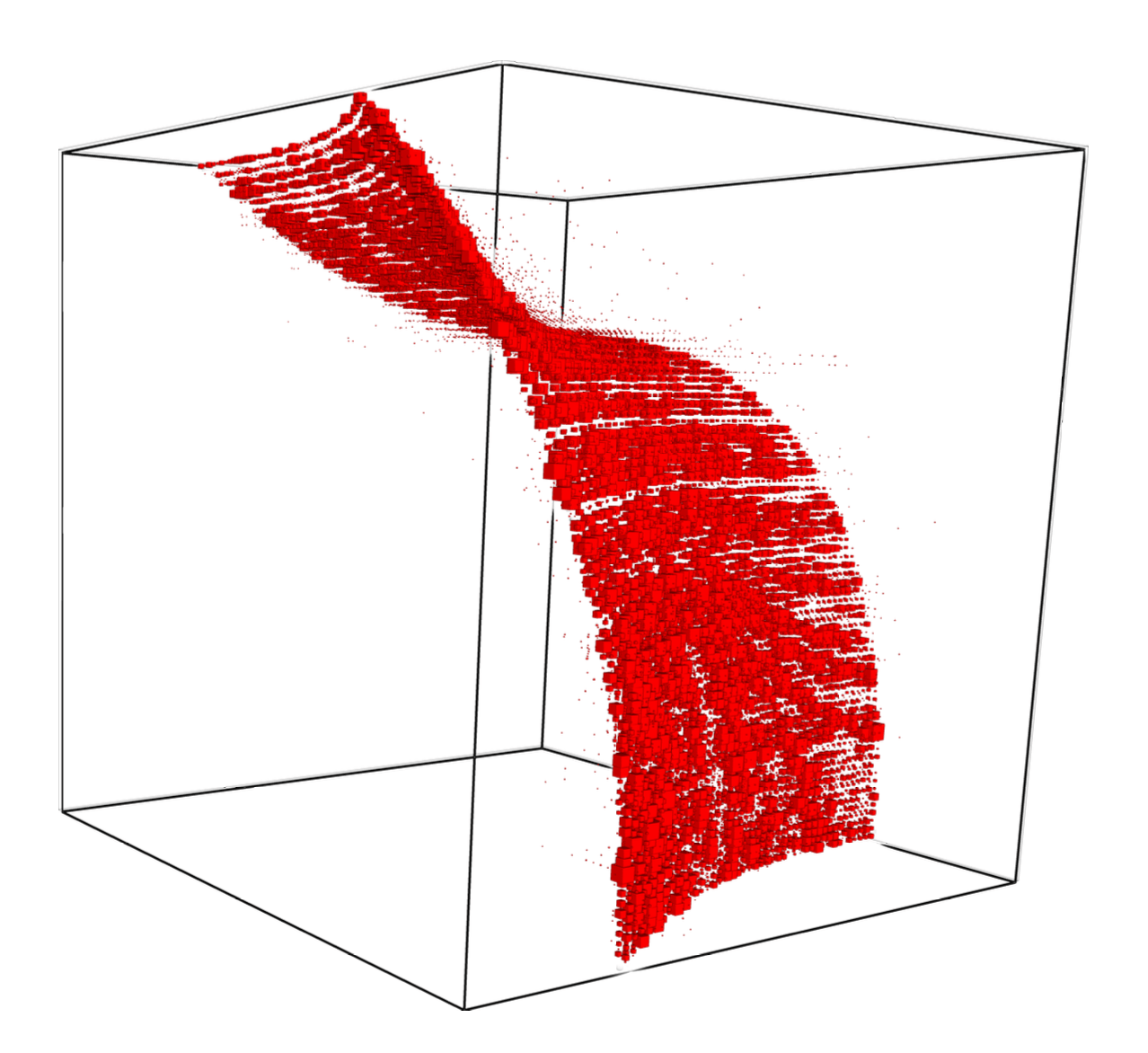
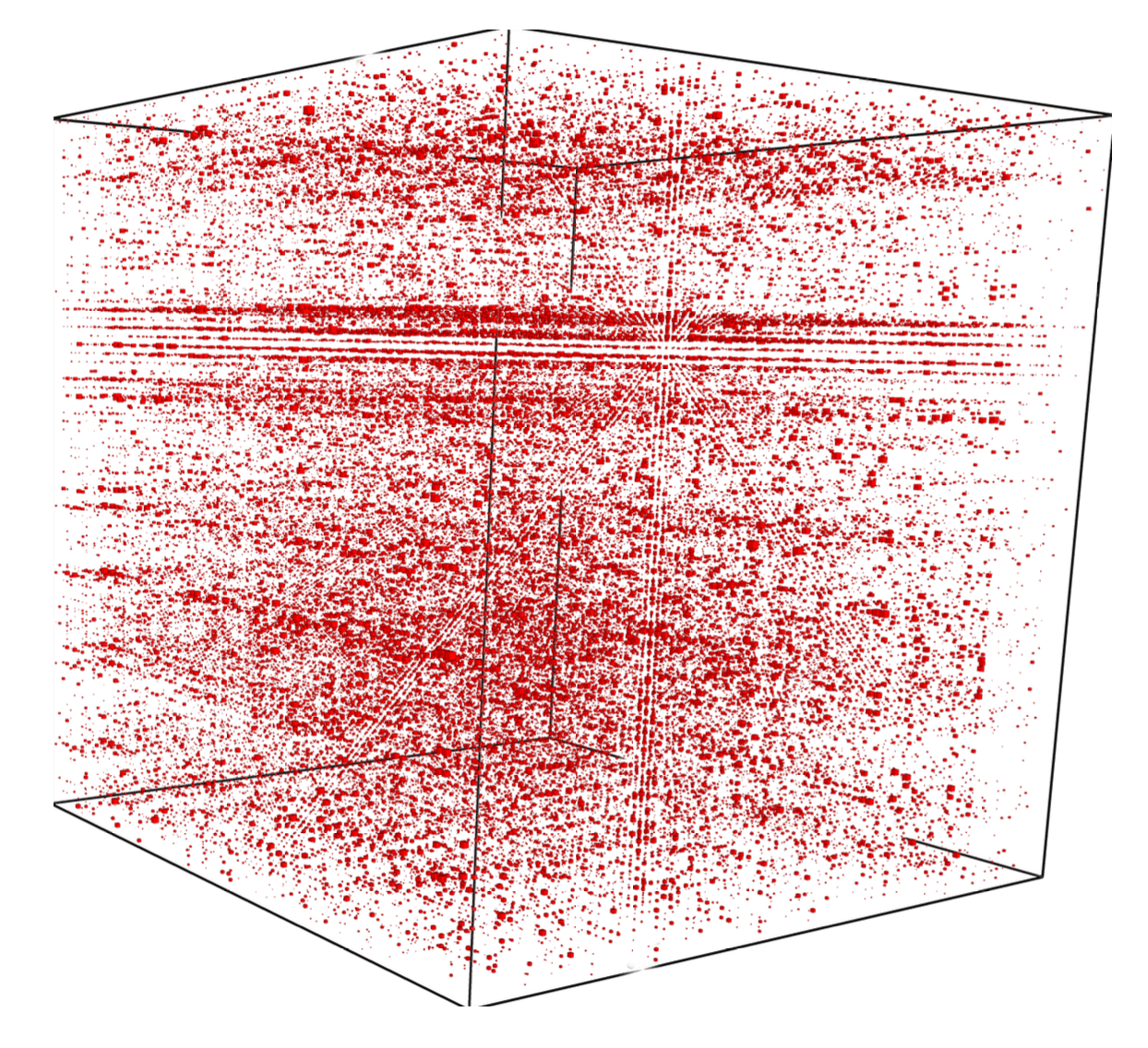

Cluster Patterns in Tensors Data


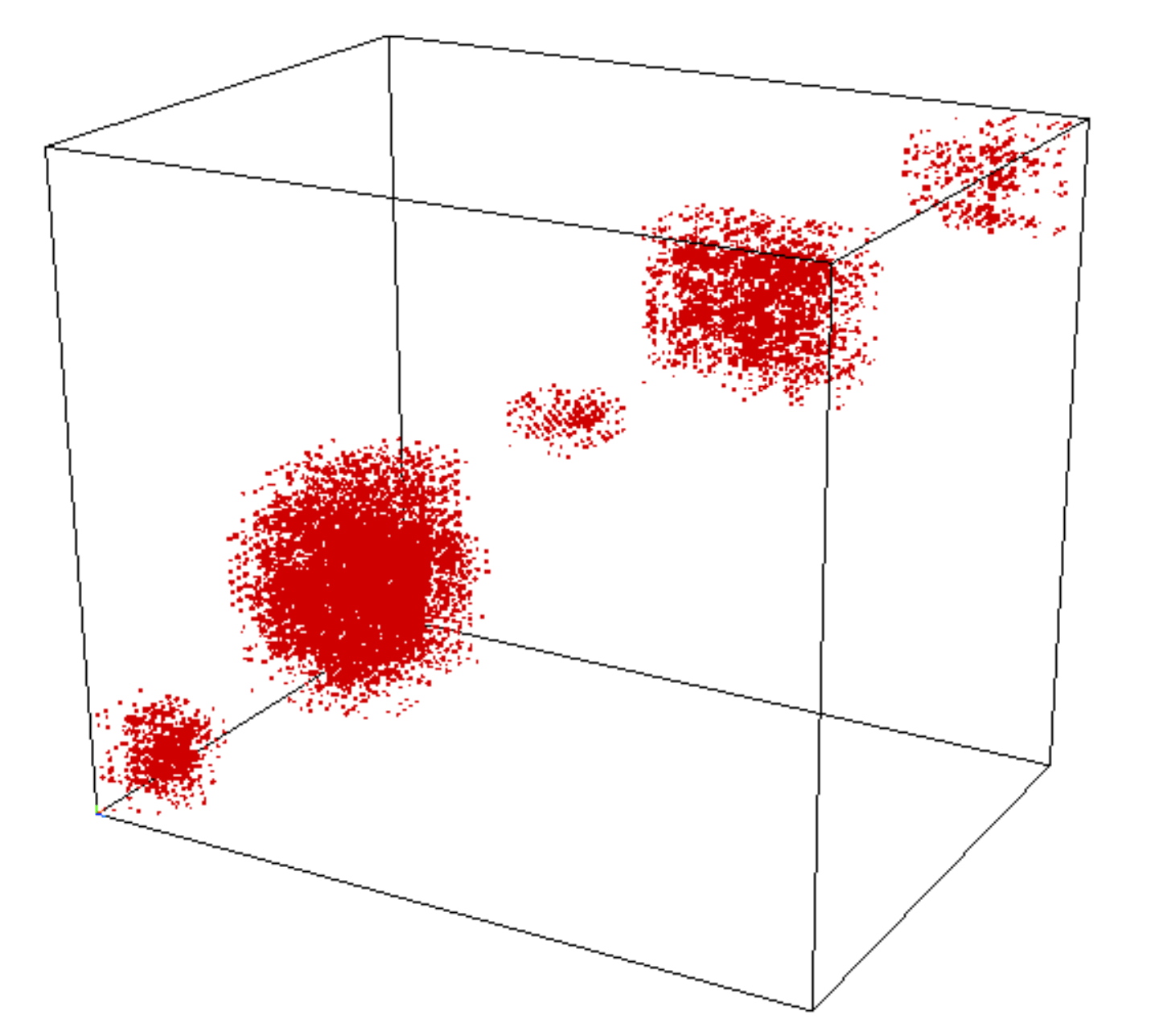
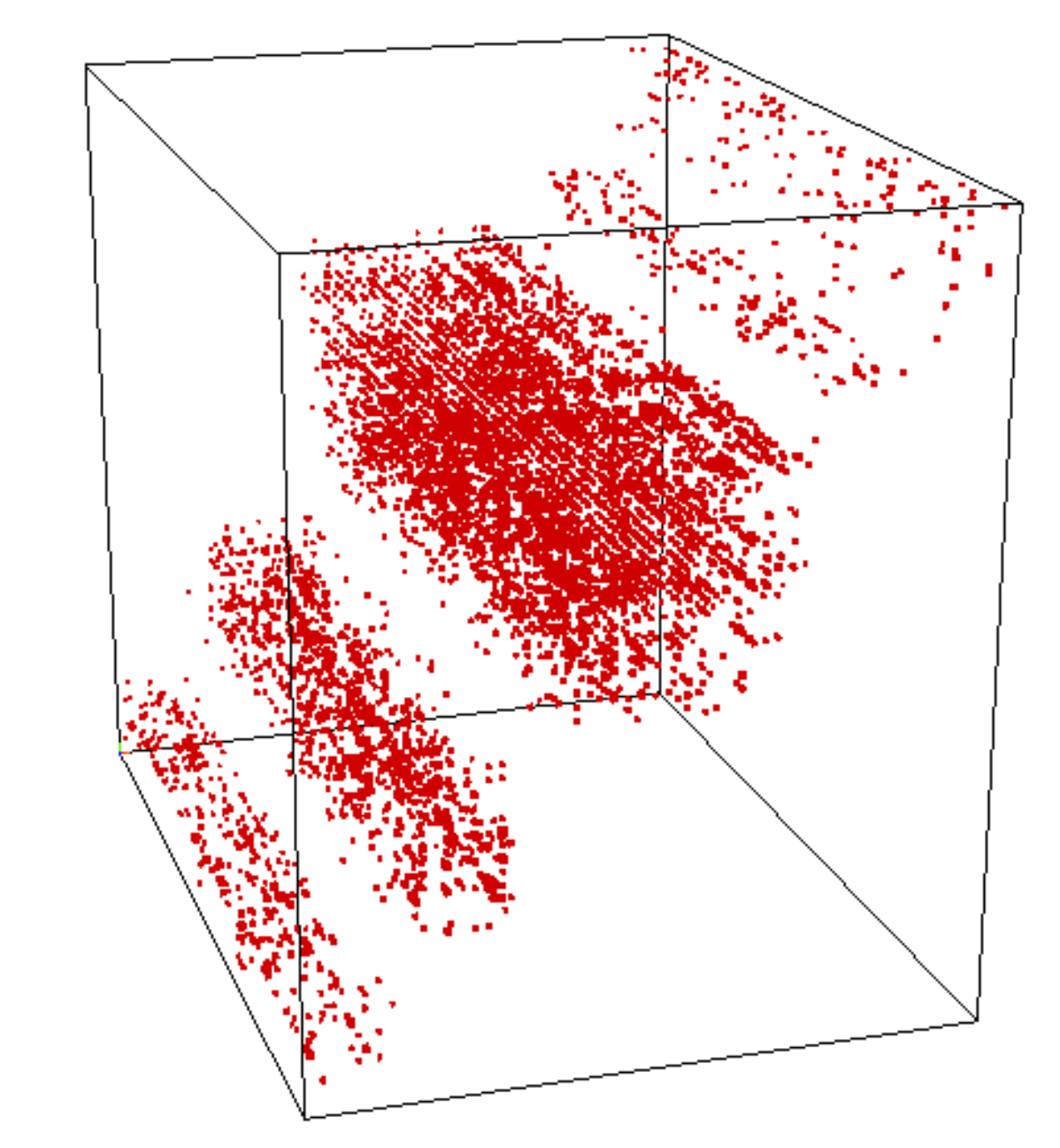
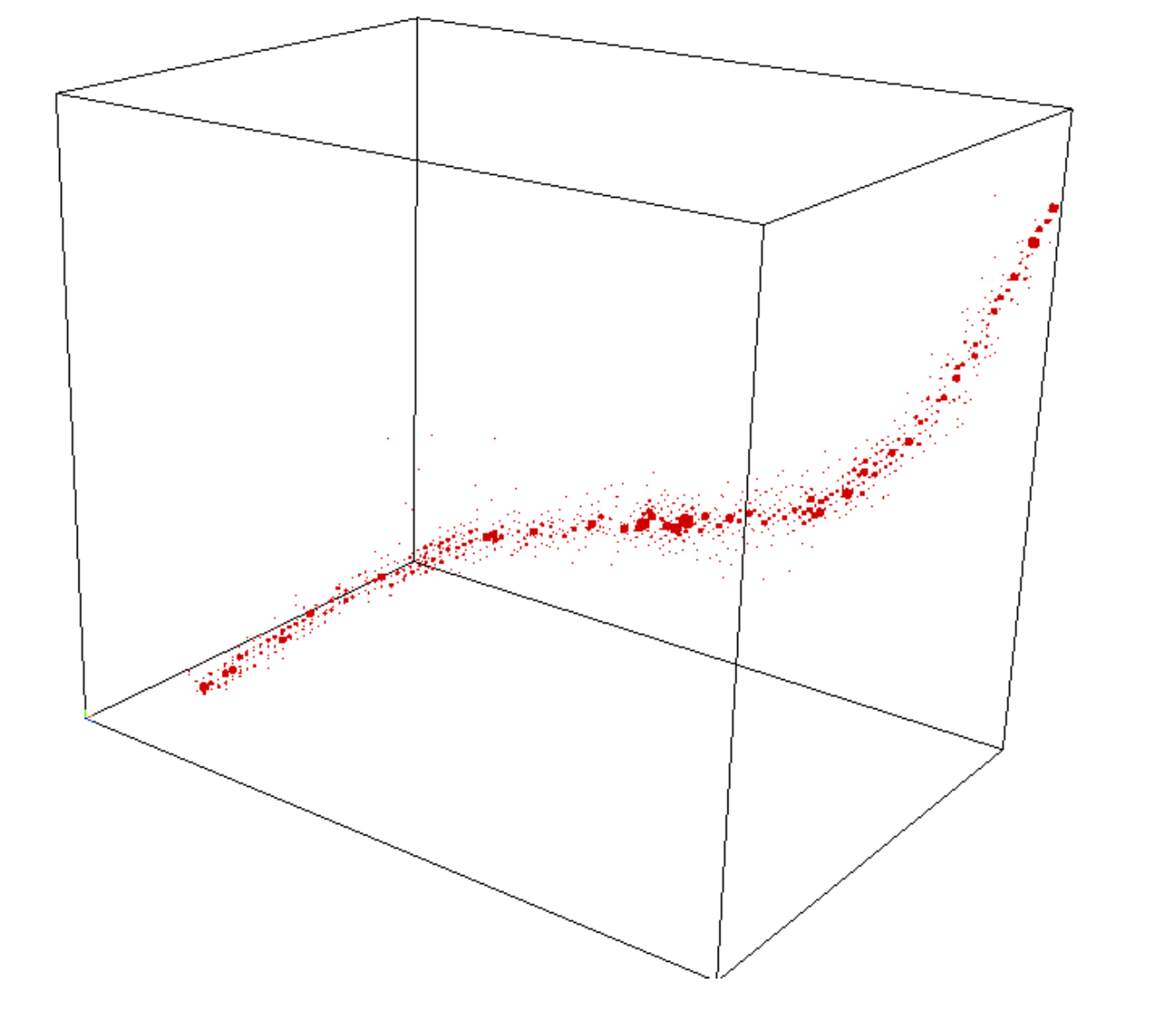
Tensors as area & volume

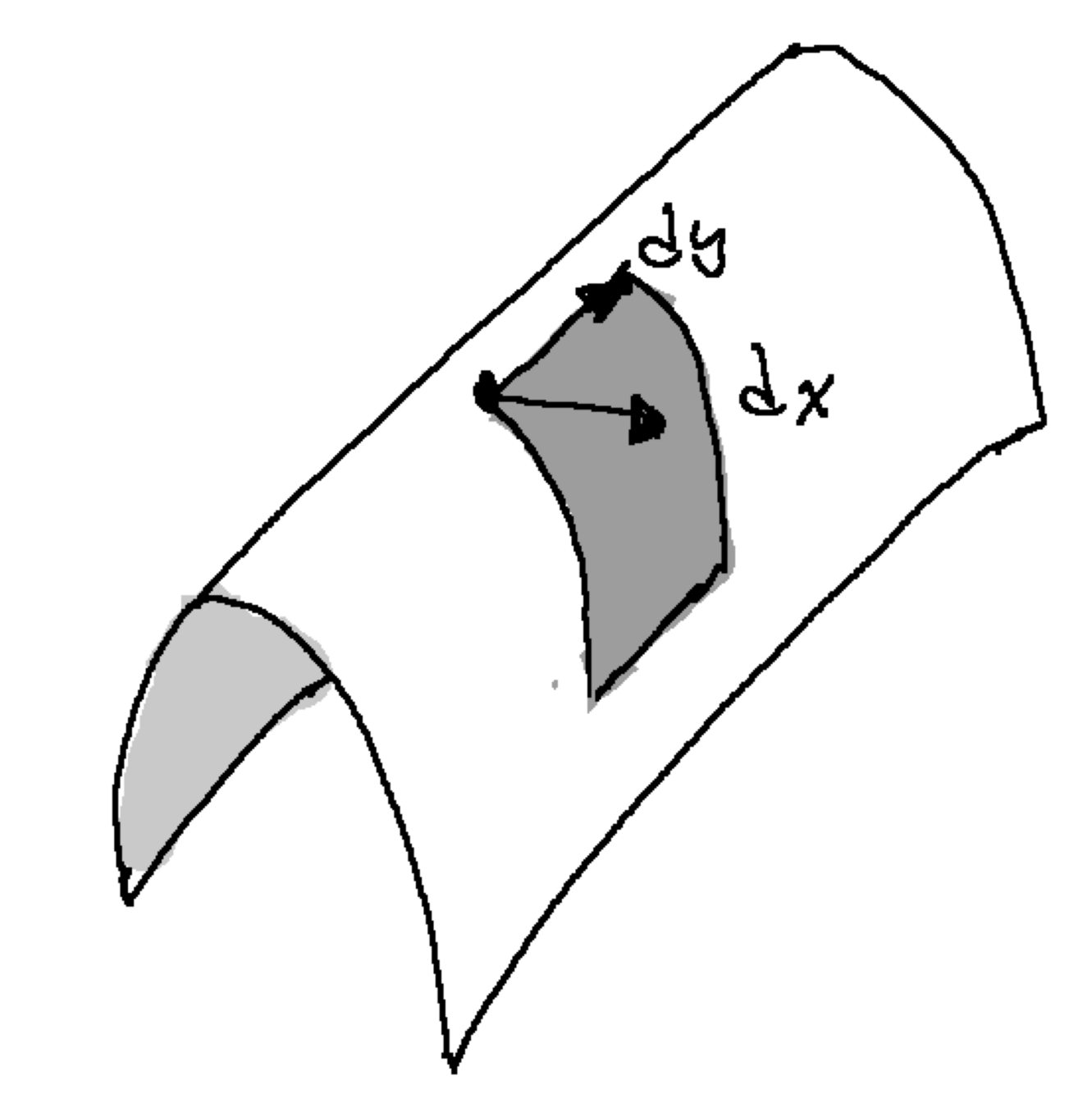
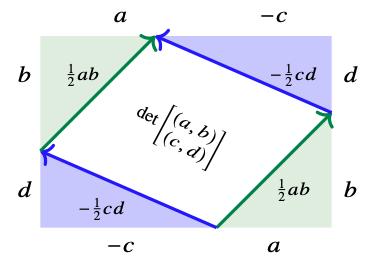
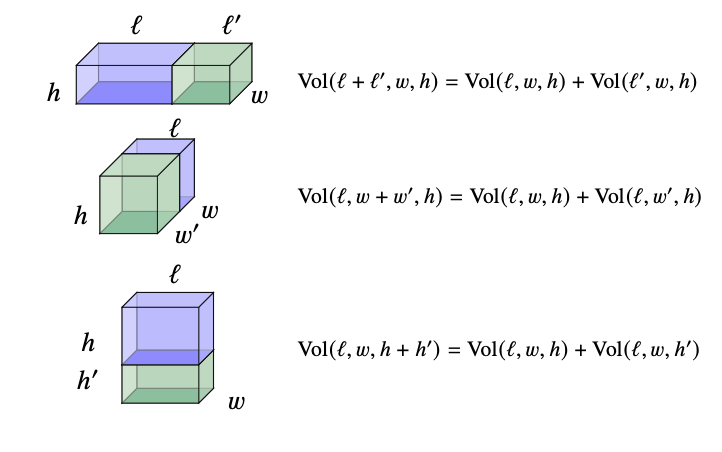
Volume basics
\[Vol(\ell, w,h)= \ell\times w\times h\]


Volume reality
\[Vol(t\mid \ell, w,h)= t\times \ell\times w\times h\] where \(t\) converts miles/meters/gallons/etc.
tensor conversion
Miles
Yards
Feet
Gallons
Area...easy
Area...not so easy

\[det\left(\begin{array}{c} (a,b)\\ (c,d)\end{array}\right) = ad-bc\]
\[= \begin{bmatrix} a & b\end{bmatrix}\begin{bmatrix} 0 & 1 \\ -1 & 0 \end{bmatrix}\begin{bmatrix} c\\ d \end{bmatrix}\]
tensor
Area...getting worse


New uses? Make up new measurements

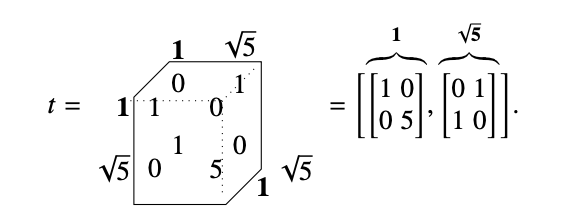
New uses? Sales Volume?

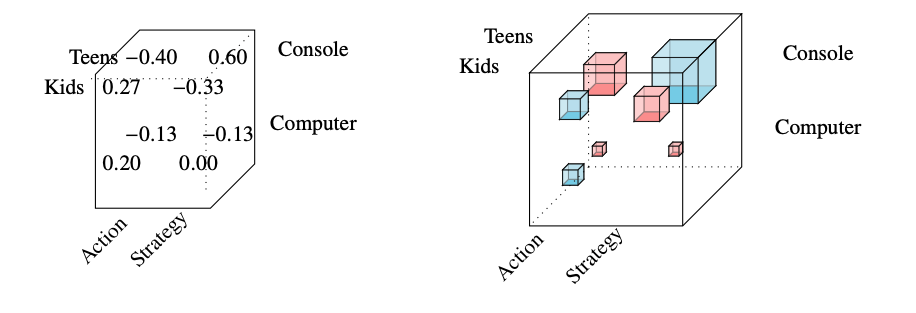
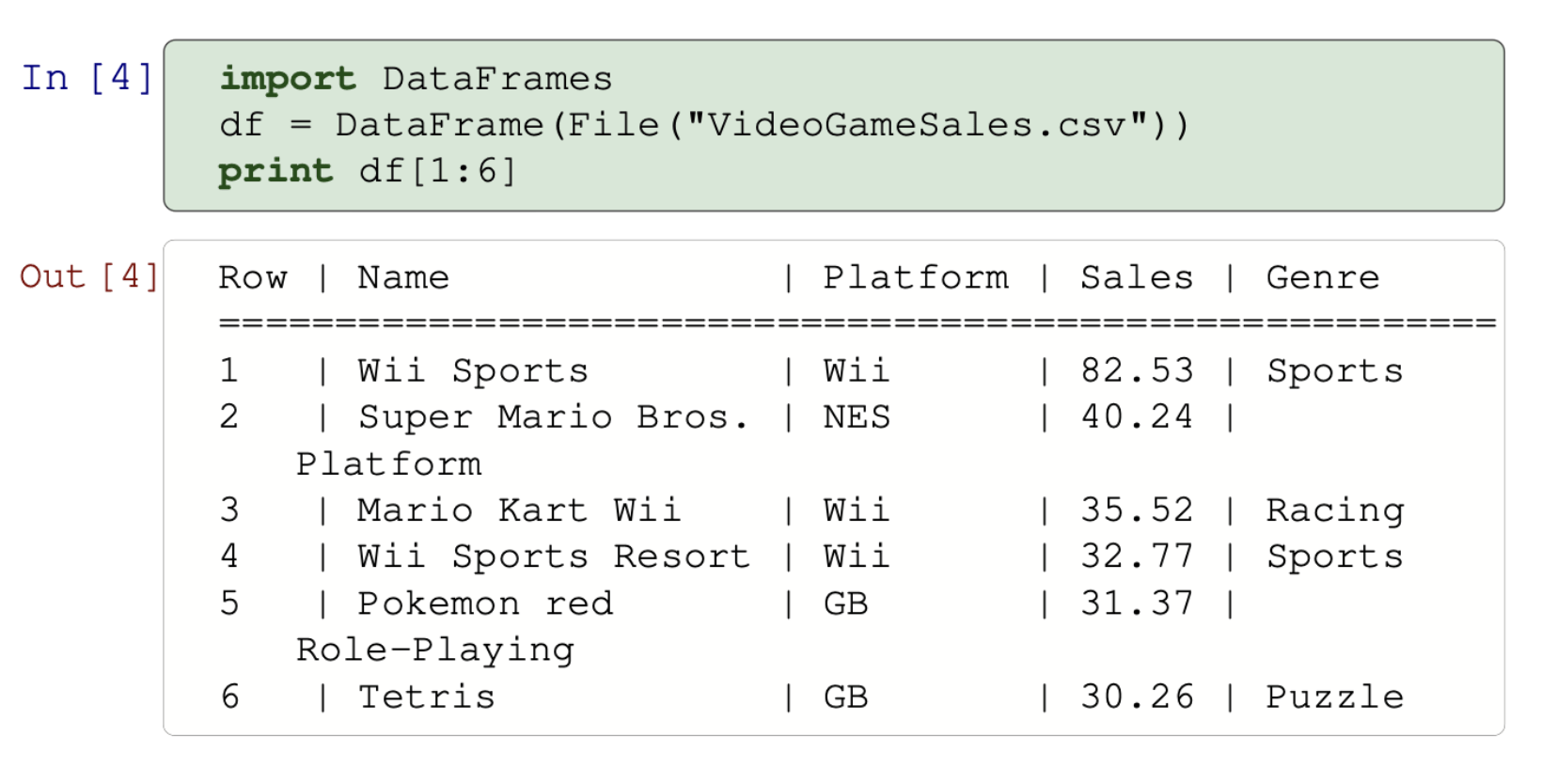
Slightly more honest

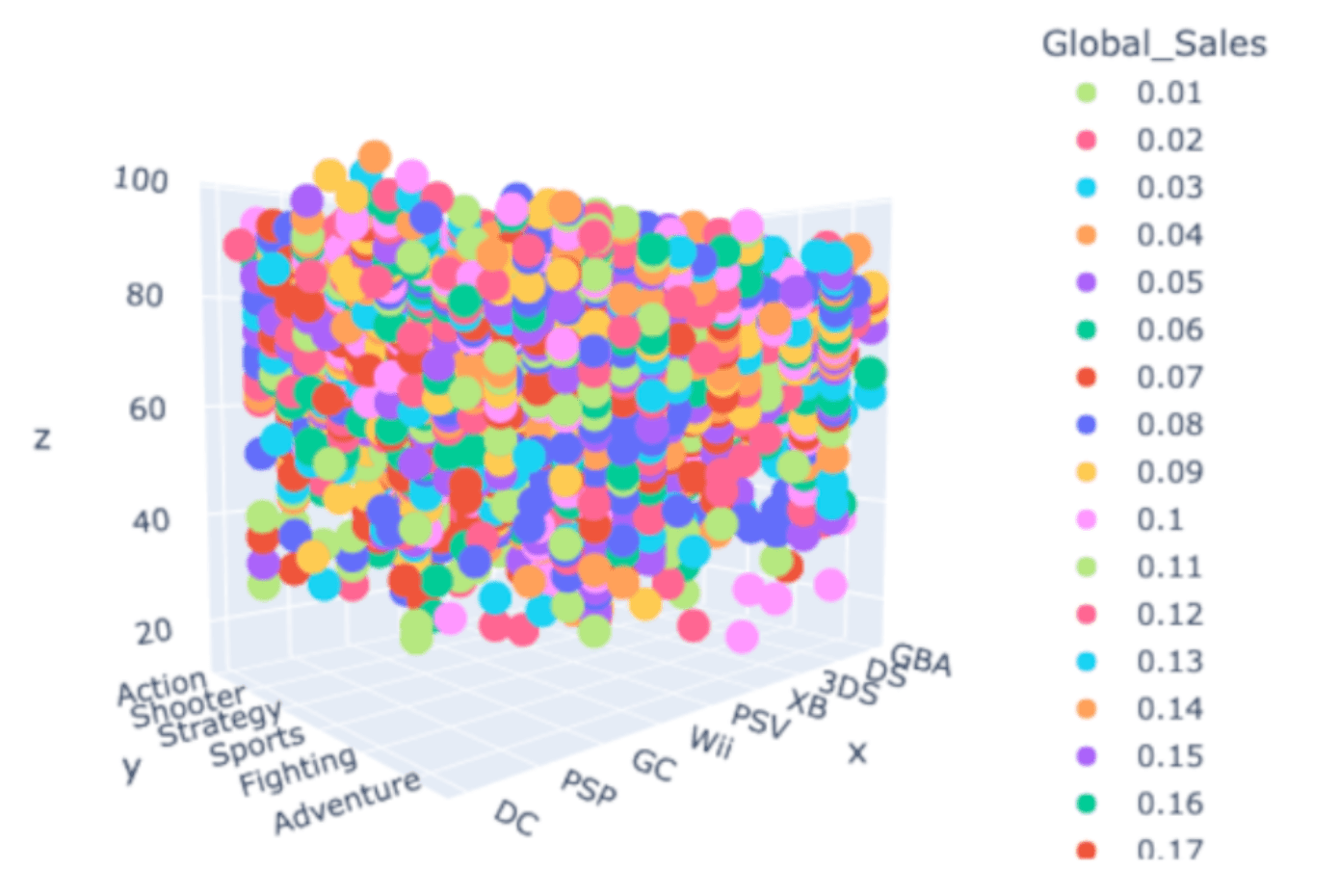
Histogram Visualization
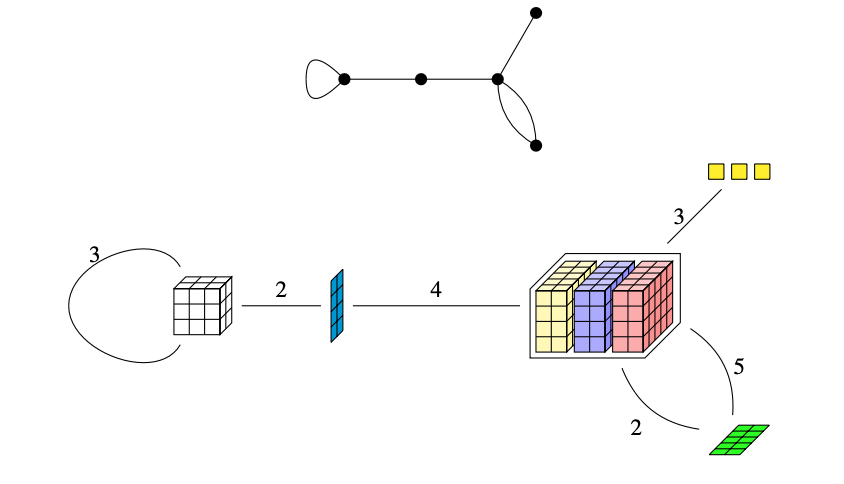
New uses? interactions probabilities and quantum information
Tensors algebra
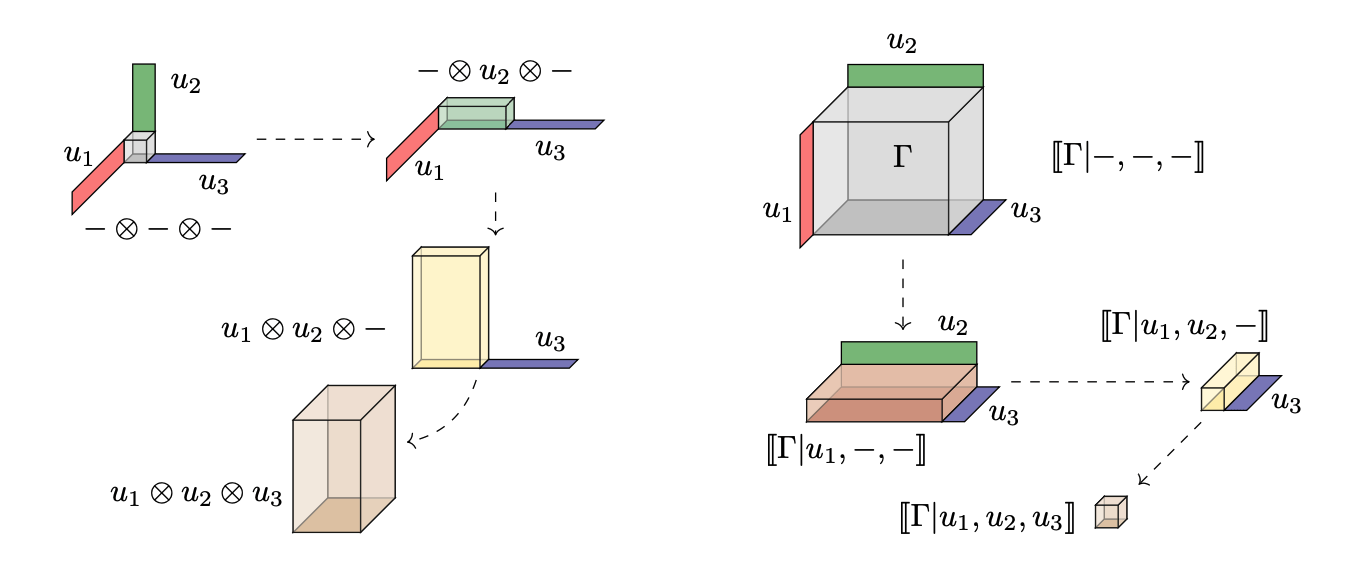
Facts?

Facts?

Consequences?
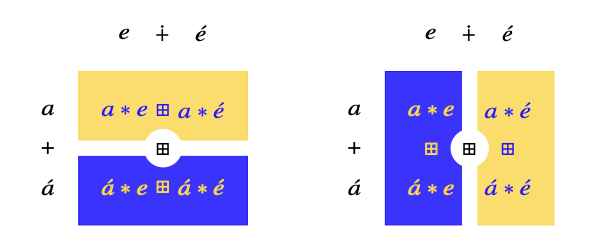

Consequences?


Real Consequences?


Building blocks

- Some parts expand up: \[a*b\qquad \partial_x X\partial_y Y\]
- Some parts accumulate: \[a*d-b*c\qquad \partial_x X\partial_y Y-\partial_x Y\partial_y X\]
- One version of decomposition focusses on this separation: "sums of products"

Products can grow bigger (inflation)
or get smaller (contraction)
\[\begin{array}{c|ccc|} * & 1 & 2 & 3 \\ \hline 1 & 1 & 2 & 3 \\ 2 & 2 & 4 & 6 \\ \hline\end{array}\]
\[\begin{bmatrix} 1 & 2 \end{bmatrix}\begin{bmatrix} 1 & 3 \\ 2 & 4 \end{bmatrix}=\begin{bmatrix} 5 & 10 \end{bmatrix}\]
\[\begin{aligned}\begin{bmatrix} 1 \\ 2 \end{bmatrix}&\begin{bmatrix} 1 & 3 \\ 2 & 4 \end{bmatrix}\\ \hline &\begin{bmatrix} 5 & 10 \end{bmatrix}\end{aligned}\]
Math convention
Computation convention
Distributive dicta
\[a*e*\cdots *u\] \[a\otimes e\otimes \cdots \otimes u\] \[\langle a,e,\ldots, u\rangle\]
\[\langle v_1,\ldots, v_{\ell}\rangle= \langle v_a,v_{\bar{a}}\rangle\qquad \{1,\ldots,\ell\}=\{a\}\sqcup\bar{a}\]
Choose a heterogenous product notation
Choose a sums
\(\displaystyle \int_I v_a(i) d\mu\) short for code "sum(vs[a],method54)"
For \(\{v_a(i)\mid i\in I\}\)
\[\int_I \langle v_a(i),v_{\bar{a}}\rangle\,d\mu = \left\langle \int_I v_a(i)\,d\mu,v_{\bar{a}}\right\rangle\]
Entropic Edict / Fubini Formula
\[=\int_J\int_I \langle v_a(i), v_b(j),v_{\overline{ab}}\rangle d\nu d\mu\]
\[\int_I \int_J \langle v_a(i), v_b(j),v_{\overline{ab}}\rangle d\mu d\nu = \left\langle \int_I v_a(i) \,d\mu, \int_J v_b(j)\, d\nu,v_{\overline{ab}}\right\rangle\]
\[\int_I \int_J f\, d\mu d\nu=\int_J\int_I f \, d\nu d\mu\]
Theory
Murdoch-Toyoda Bruck
All entropic sums that can solve equations \(a+x=b\) are affine.
Eckmann-Hilton
Entropic sums with 0 are associative & commutative.
Grothendieck
You can add negatives.
Mal'cev, Miyasnikov
You can enrich distributive products with universal scalars.
Davey-Davies
Tensor algebra is ideal determined precisely for affine.
First-Maglione-Wilson
Full classification of algebraic enrichment:
- If 3 or more positions must be Lie
- 2 can be associative or Jordan.
Moral: tensors are the multiplication tables of distributive products.
Theory: All of grad school algebra holds, only it is now heterorgeneous, i.e. this
\(h(u*v)=f(u)*g(v)\) "heteromorphism"
not this
\(f(u*v)=f(u)*f(v)\) "homomorphism"
Back to decompositions
What are the markets?


Data table --> Multiplication table


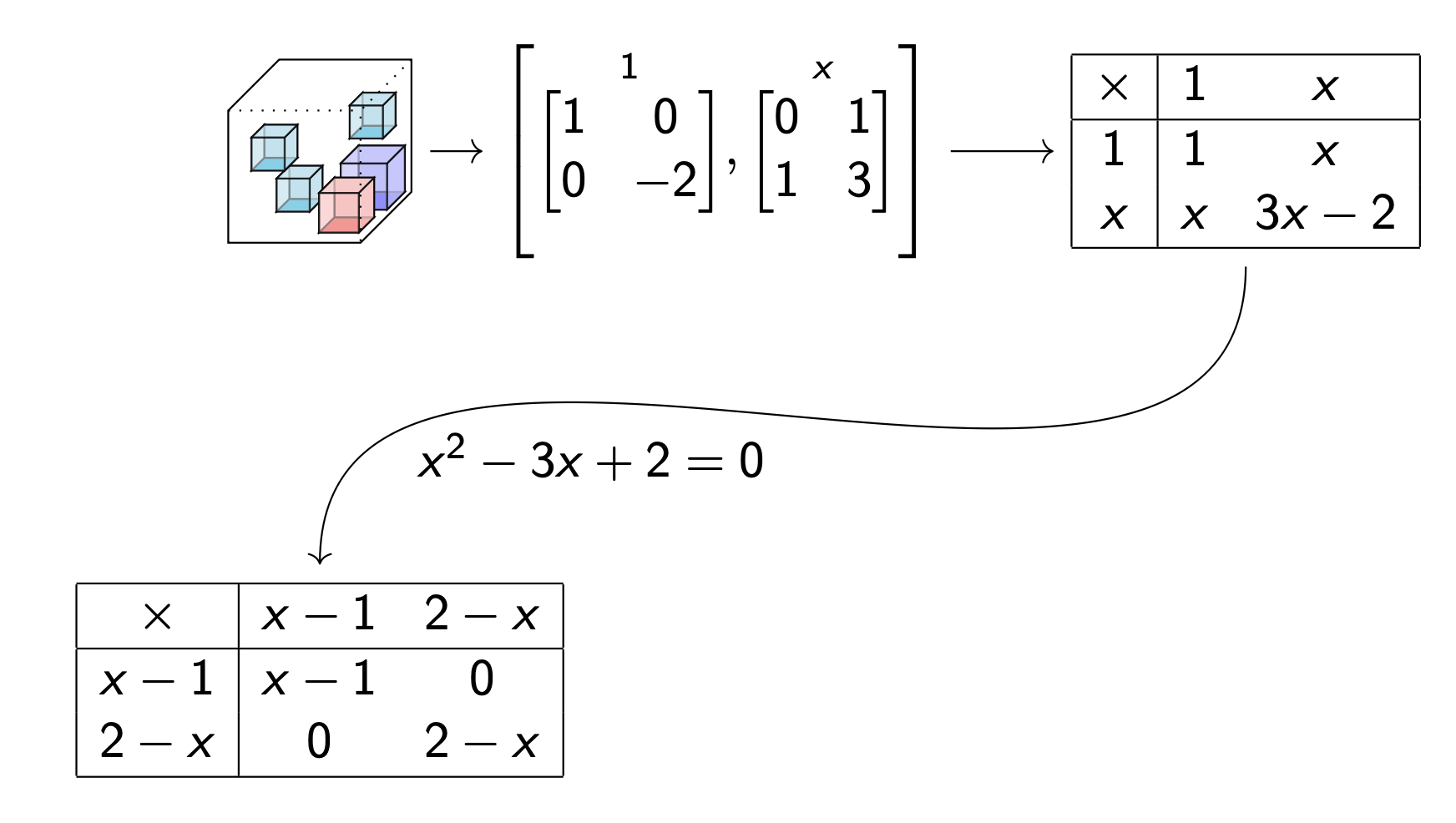
Use algebra to factor
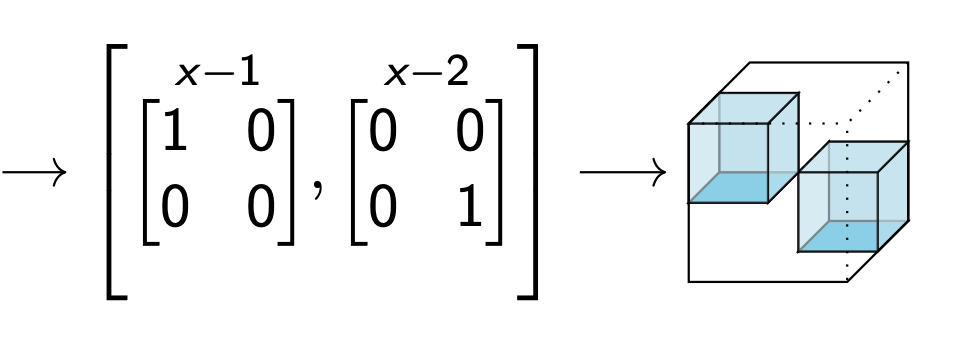
Forcing Good Algebra in Real Life
In real life the "multiplication" you get from a tensor is bonkers!
\[*:\mathbb{R}^2\times \mathbb{R}^3\to \mathbb{R}^3\]
Get to 100's 1000's of dimensions and you have no chance to know this algebra.
Study a function by its changes, i.e. derivatives.
Study multiplication by derivatives:
\[\partial (f·g ) = (\partial f )·g + f·(\partial g ).\]
In our context discretized. I.e. ∂ is a matrix D.
\[D(f ∗g ) = D(f ) ∗g + f ∗D(g )\]
And it is heterogeneous, so many D's
\[D_0(f*g) = D_1(f)*g + f * D_2(g).\]
For general tensors \[\langle t| : U_{1}\times \cdots \times U_{\ell}\to U_0\] there are many generalizations.
E.g.
Or \[ D_0\langle t |u_1,u_2, u_3\rangle = \langle t| D_1 u_1, u_2,u_3\rangle + \langle t| u_1, D_2 u_2, u_3\rangle + \langle t|u_1, u_2, D_3 u_3\rangle.\]

For general tensors \[\langle t| : U_{1}\times \cdots \times U_{\ell}\to U_0\]
Choose a "chisel" (dleto) an augmented matrix C.
Write \[\langle \Gamma | C(D)|u\rangle =0\] to mean:

means chisel




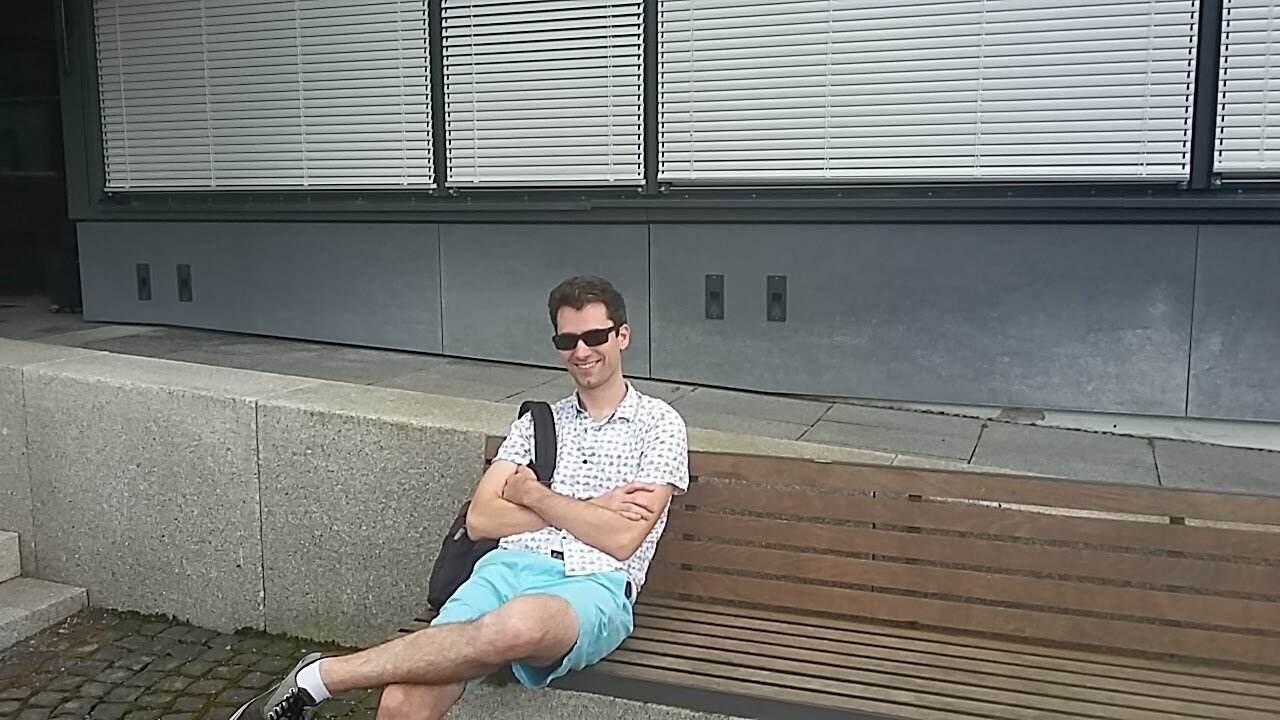
And it's solutions are a Lie algebra
The main fact
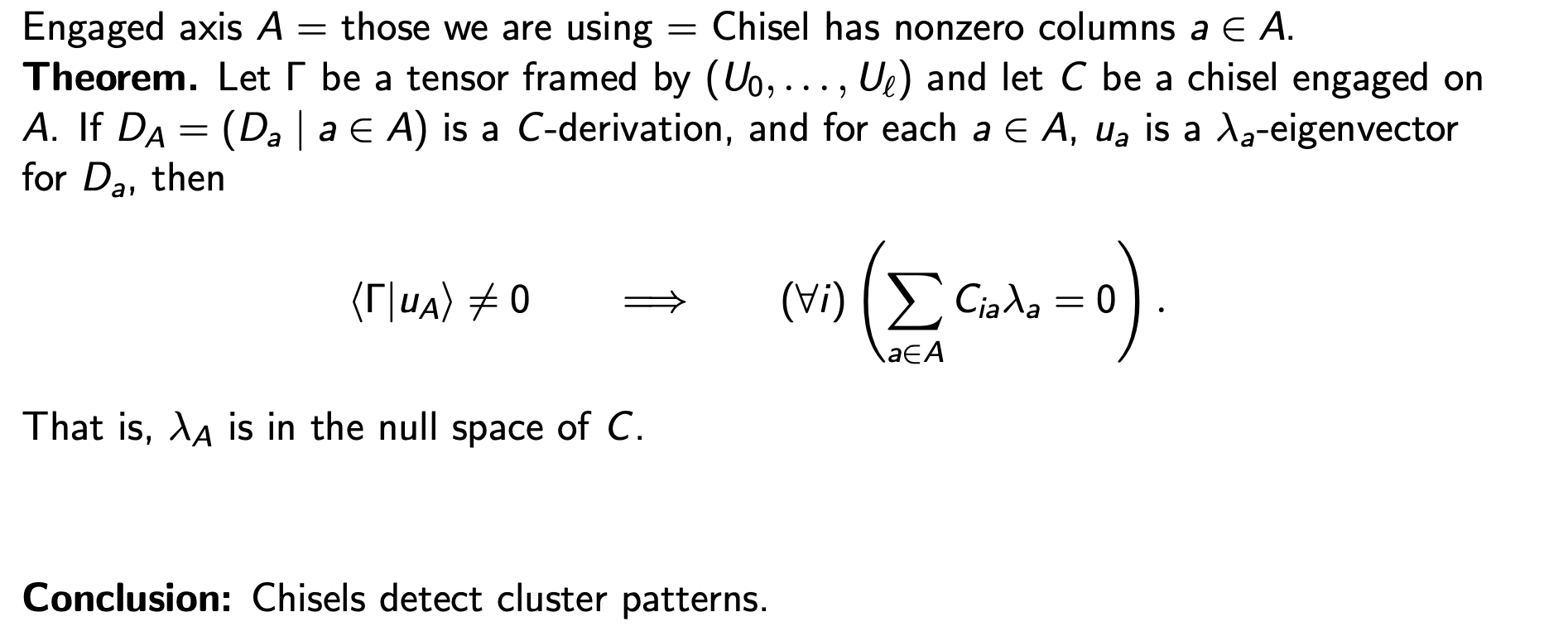
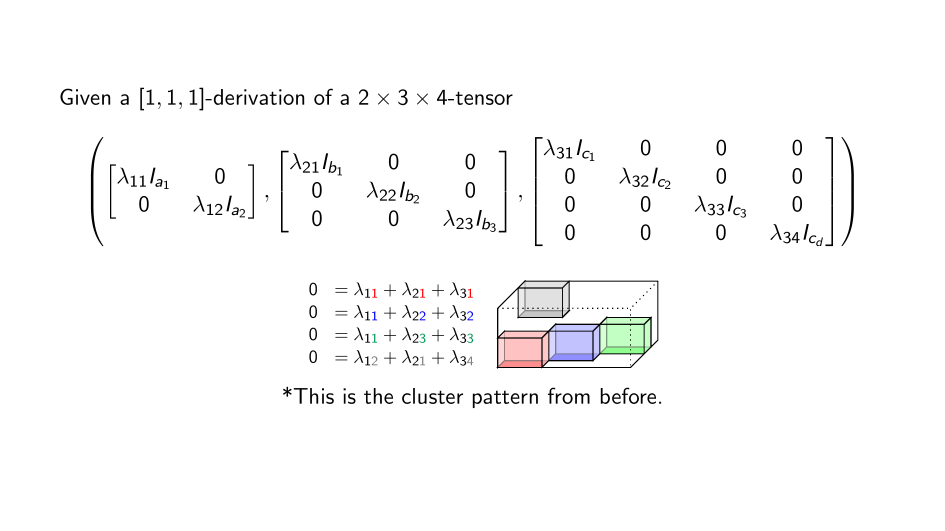

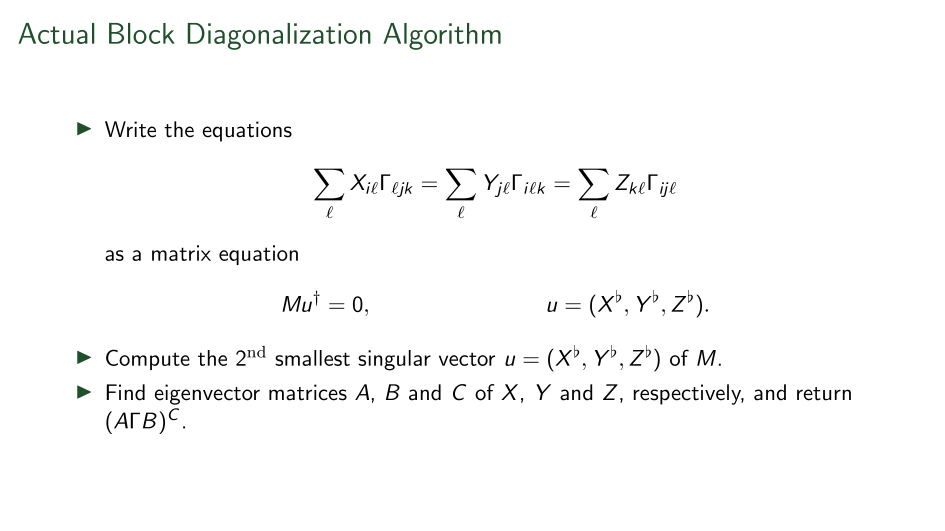
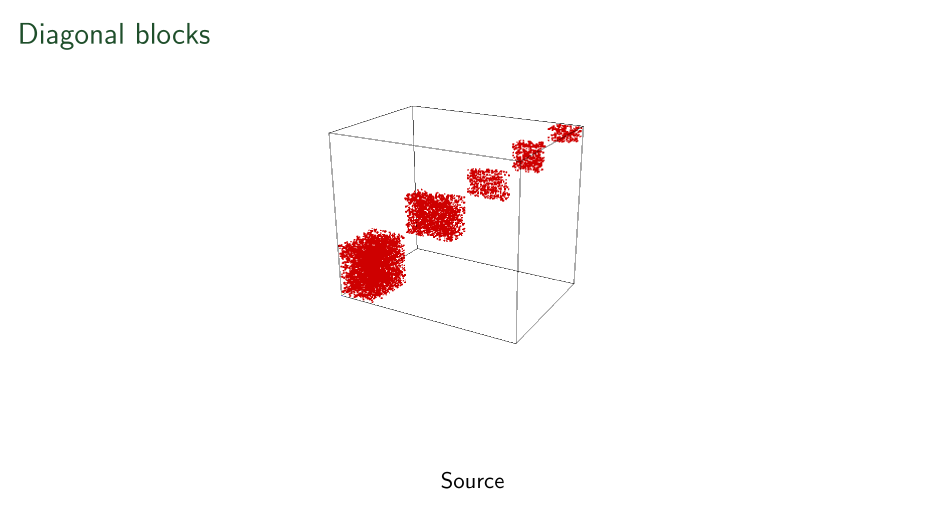
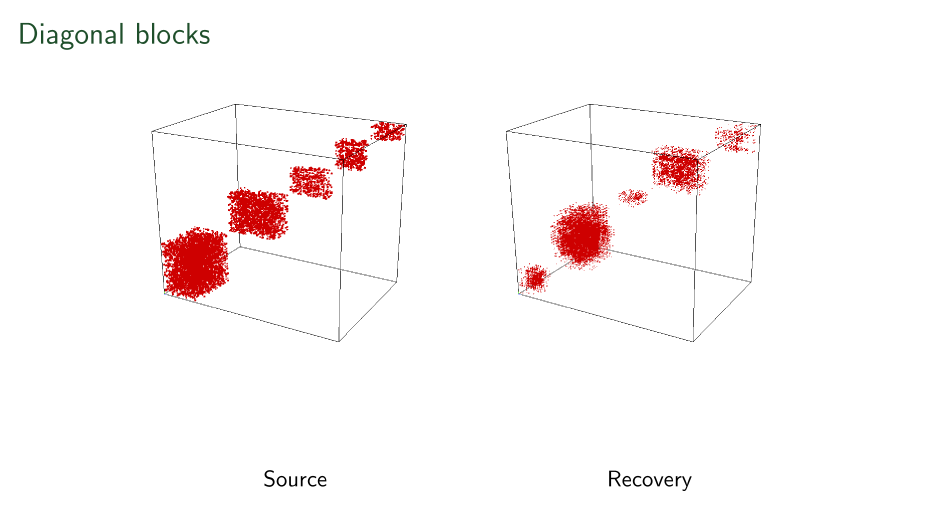
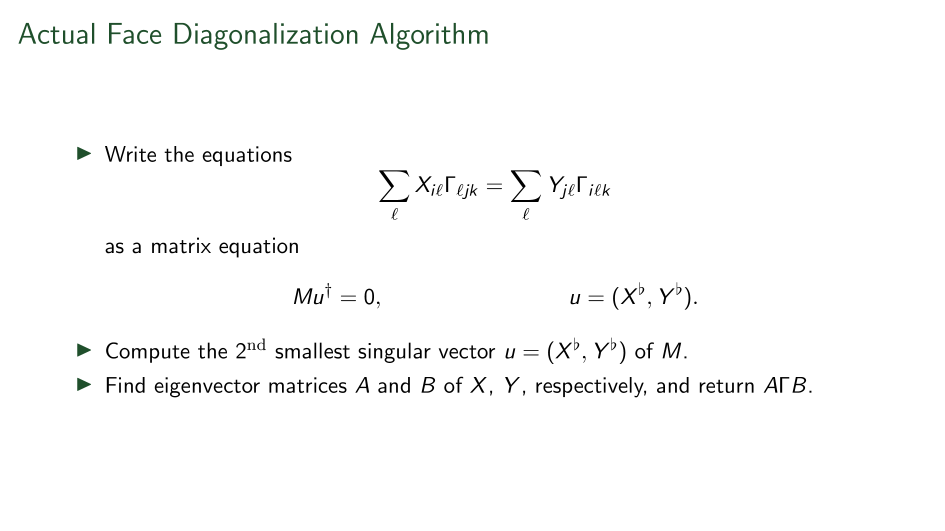
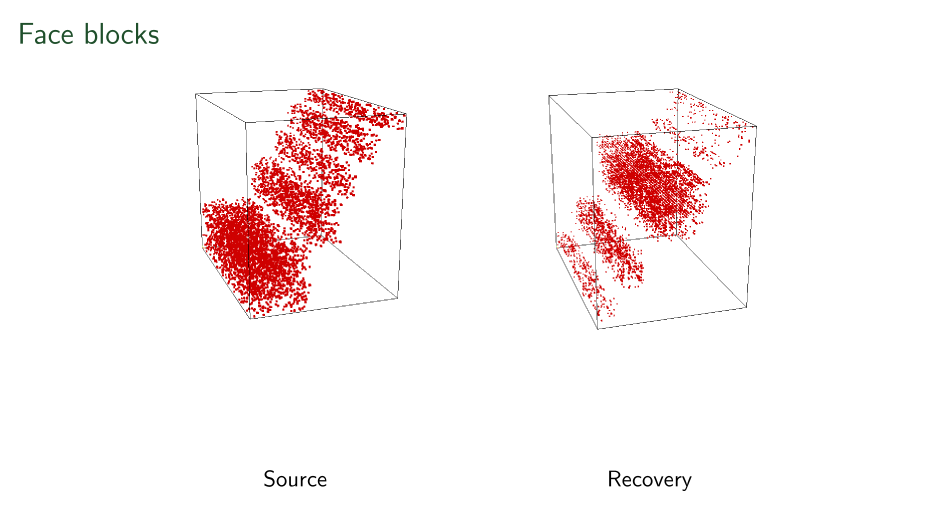

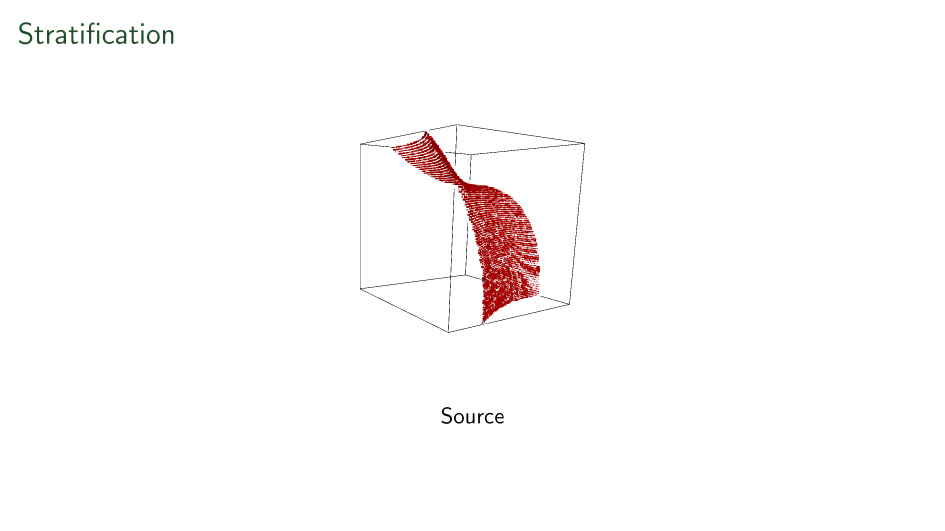
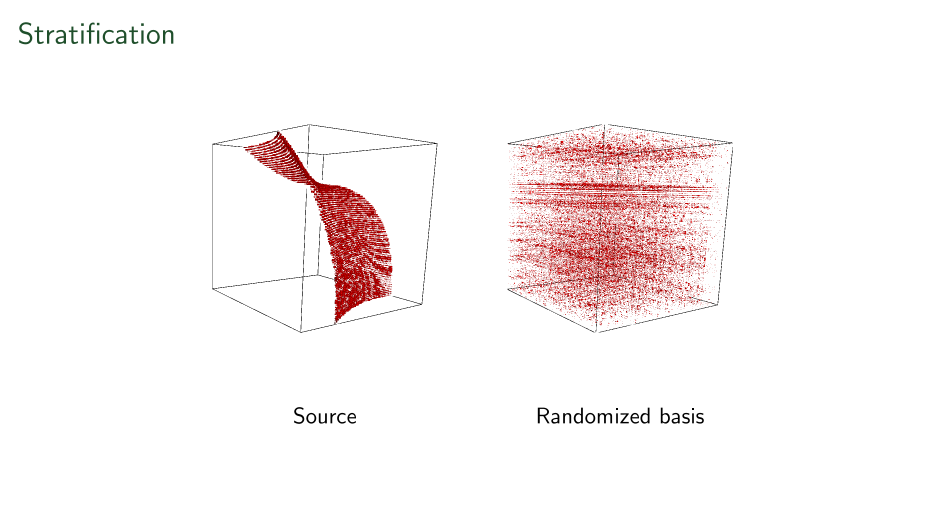
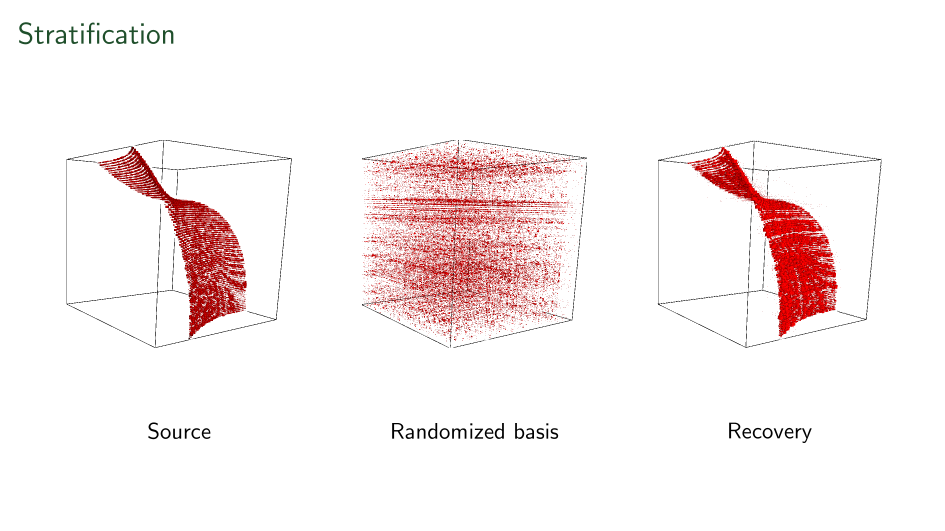
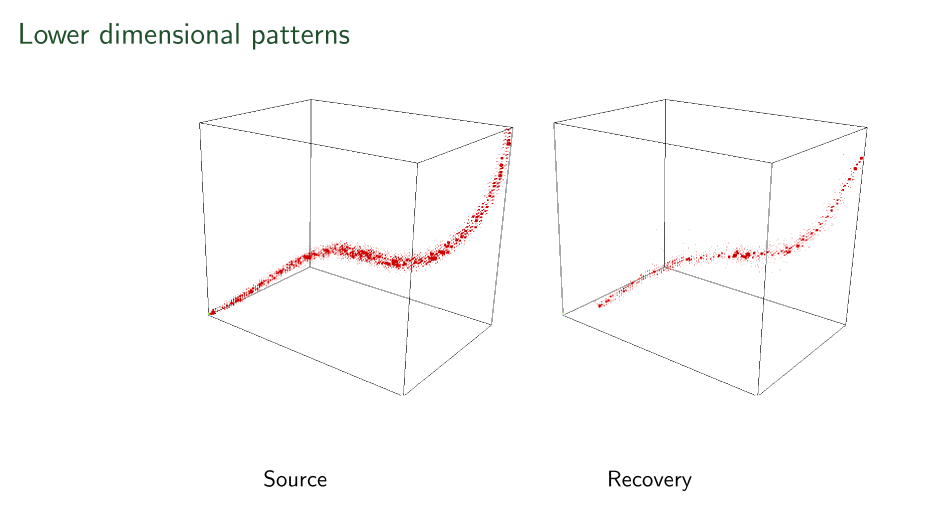
Summary
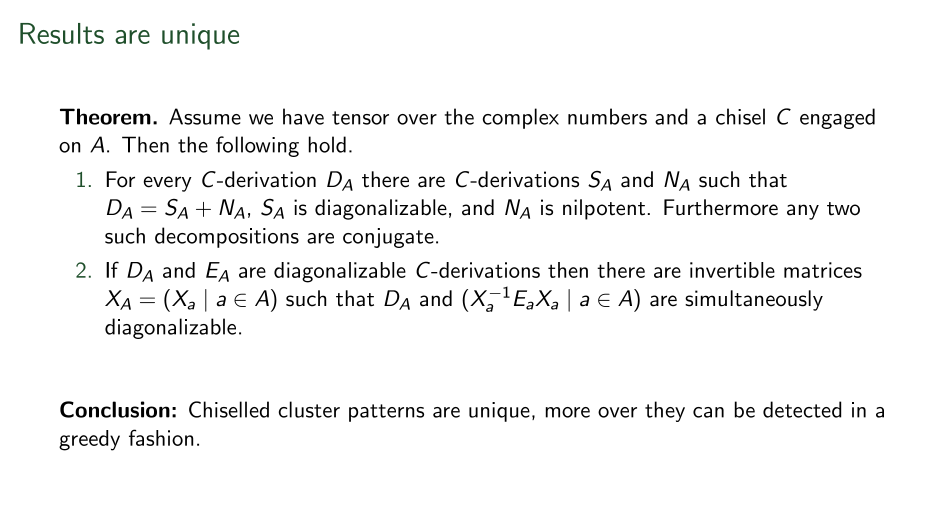
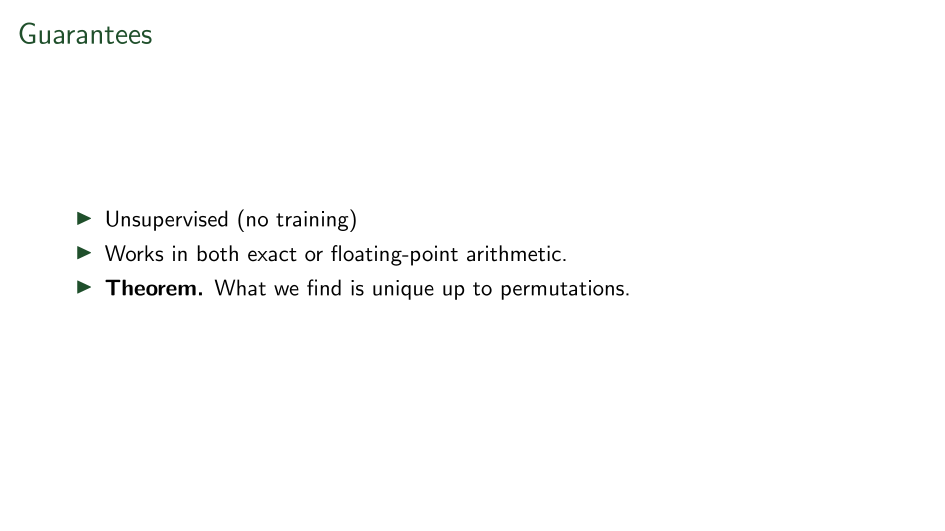
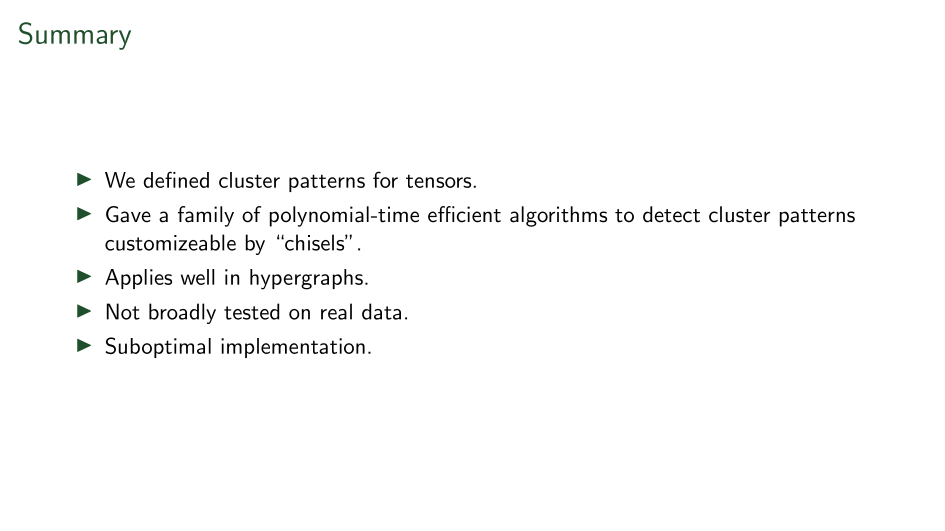
Bonus
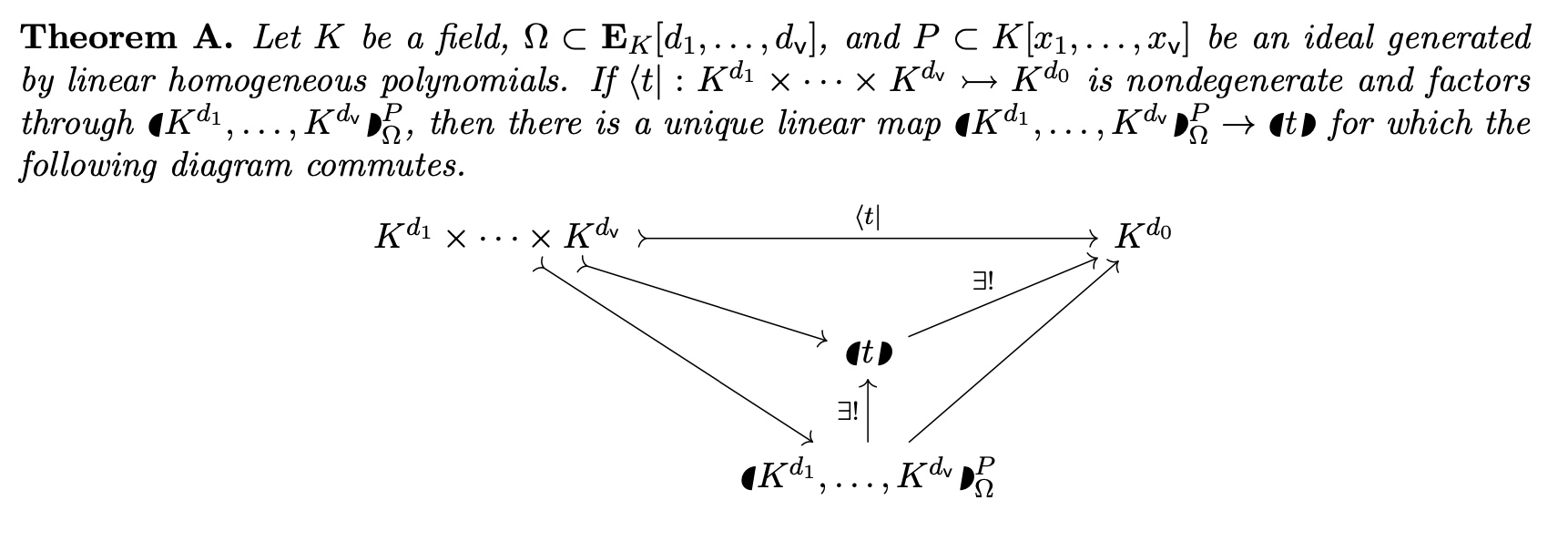
First-Maglione-W.
In other words, the Whitney "Associative" tensor product is not the right one.
Use the Lie derivation-tensor "densor"
Cluster Patterns
By James Wilson
Cluster Patterns
A visual tour of how volume leads to tensors.
- 259



